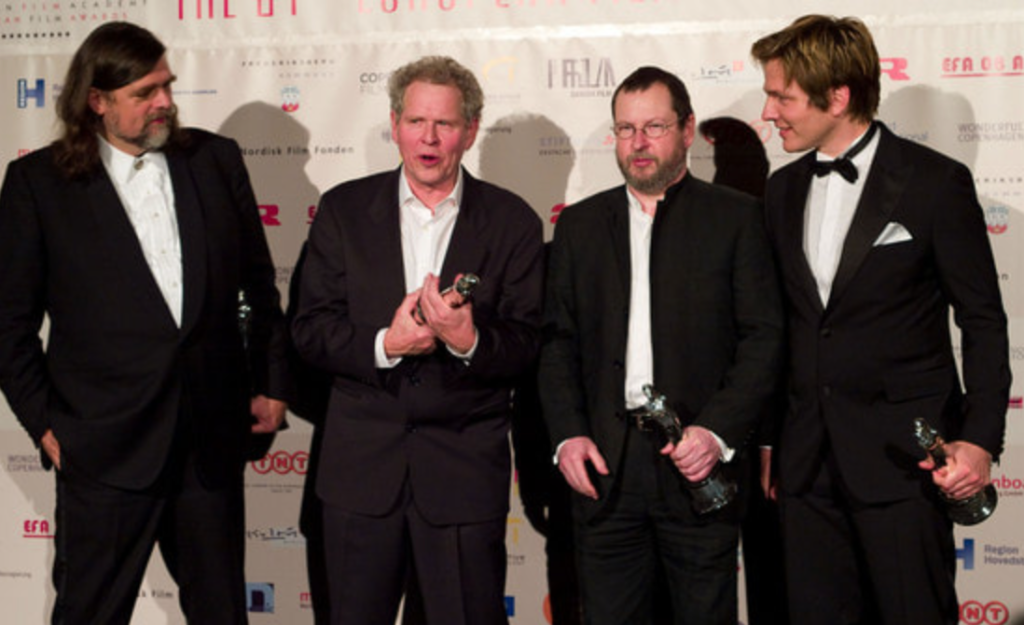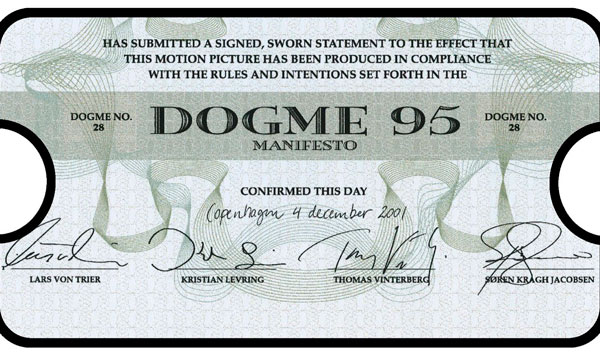By the second half of the 90s, making movies with the sole purpose of them becoming mainstream blockbusters became the goal of most directors. There was a shift from traditional filmmaking to filmmaking where the only objective was to create something eye-catching that would please the masses. This meant less originality and more over the top unnecessary technical effects. This is where Danish filmmakers Lars von Trier, Kristian Levring, Soren Kragh-Jacobsen, and Thomas Vinterberg come in. Frustrated with the takeover and the lack of originality with these big-budget filmmakers, they created the cinematic style Dogme 95 in 1995. Dogme 95 seeks to return filmmaking to its most basic forms while eschewing the extra special effects and sensationalized narratives that characterize popular cinema. They intended to demonstrate that quality is not determined by budget to make a point. The four are pictured from left to right below.

They created their manifesto, The Vows of Chastity, a stringent set of guidelines, which is followed to achieve this. The Vows of Chastity are intense and made creating a film much more difficult than it had to be in the 90s, but it was crucial to follow to truly create a Dogme 95 style film. Notable rules are as follows:
- Shooting must be done on location.
- Props and sets must not be brought in (if a particular prop is necessary for the story, a location must be chosen where this prop is to be found).
- The camera must be hand-held. Any movement or immobility attainable in the hand is permitted.
- The sound must never be produced apart from the images or vice versa (Music must not be used unless it occurs where the scene is being shot).
- The director must not be credited.
And this is just to name a few!

Three years after the movement’s inception, in 1998, the very first official Dogme 95 movie was released. Thomas Vinterberg’s Festen is a dark comedy-drama about a family reunion that exposes a significant and sinister family secret. One of the most highly praised movies produced during the Dogme 95 movement is Festen. By taking home the Jury Prize at Cannes in 1998, it established its enormous success. Another popular Dogme film is Lars von Trier’s The Idiots. The movie centers on a group of individuals who imitate people with disabilities in an effort to “socially rebel.” Even though The Idiots received a lot of negative press when it first came out, it was nominated for the Palme d’Or at Cannes in 1998. Since the film’s premiere, von Trier has acknowledged that a number of production choices were made that violated the Dogme 95 guidelines, including the use of a stand-in actor and tampering with light sources. This demonstrated that this concept was not as viable as they had believed. Below is a clip that gives more information on Festen.
There are a total of 35 Dogme movies, with Lars von Trier continuing to be the movement’s most well-known representative on a global scale. Even with this fairly small number, there are countless other films that were inspired by the movement, just did not adhere to every rule. However, Dogme 95 started to lose favor at the end of the century, and many filmmakers turned away from its tenets. Films to this day take inspiration from the style though, it has made an impact on low-budget movies. For example, millions of individuals now own smartphones with video recording capabilities and make short films themselves. Along with this, the unique 35 films are fortunately still out there for people to enjoy that adhere to the rules. Dogme 95s legacy lives on!